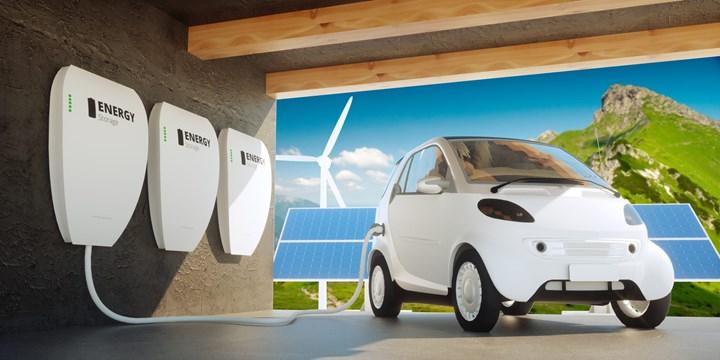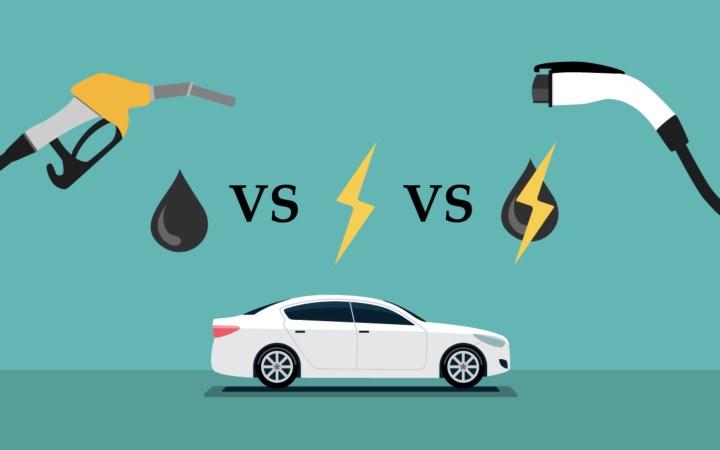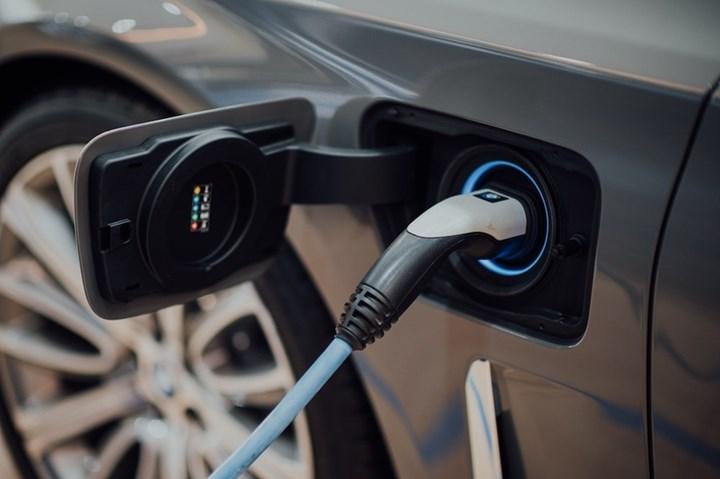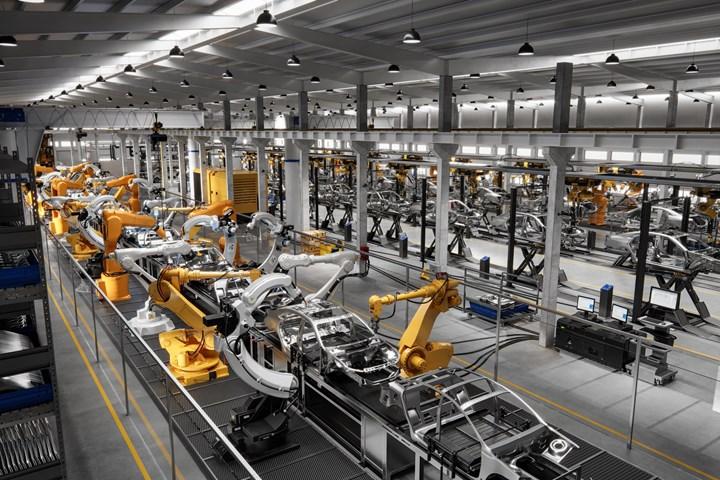 Electric cars are currently being touted as the cleanest sustainable means of transportation. Zero-emission, state-of-the-art electric vehicles seem to be saving us from internal combustion engines and liquid fuels. So is this really the case?
Electric cars are currently being touted as the cleanest sustainable means of transportation. Zero-emission, state-of-the-art electric vehicles seem to be saving us from internal combustion engines and liquid fuels. So is this really the case?Tesla, the leader in electric cars for some, was removed from the S&P 500 ESG index earlier this year for a “lack of a low carbon strategy”. Leaving aside the usefulness and meaning of ESG ratings, is there really justification for such criticisms directed?
*ESG score is a rating used to determine how sustainable a company is in the areas of environmental impact, social impact and governance.
There’s always been a transformation
 What do you think was the biggest emission problem of big cities in the 19th century? The source of the biggest emission problem of that age was horse carts and therefore horse manure. Horse-drawn carriages and their filth caused an overpopulation of flies, diseases, and odour.
What do you think was the biggest emission problem of big cities in the 19th century? The source of the biggest emission problem of that age was horse carts and therefore horse manure. Horse-drawn carriages and their filth caused an overpopulation of flies, diseases, and odour.With the advent of internal combustion engine cars in the early 20th century, this problem began to resolve itself. But this time there was a different problem, a different pollution: Greenhouse gas. The increase in greenhouse gases (such as CO2) in the atmosphere causes the sun’s rays to be retained on the earth with greenhouse gases and thus the warming of the world. This is the main problem of today’s global warming and climate change issues.
In the 21st century, battery-powered electric vehicles or more environmentally friendly vehicles have begun to replace internal combustion cars. According to some, the carbon footprint of electric vehicles (the equivalent of greenhouse gases released into the atmosphere in terms of carbon dioxide) is zero, while according to some, they have a larger carbon footprint than traditional internal combustion cars. This is due to the production and destruction of battery-powered electric vehicles—especially their batteries—as well as the use of highly polluting fuels such as coal to create the electricity that powers them.
What are the benefits of electric cars?
 Let’s talk about the good stuff first. As soon as the electric car leaves the factory and hits the roads, it delivers undeniably good environmental performance in terms of emissions. So unless the batteries or the batteries themselves have exploded or need a new battery, the electric car does not emit any polluted gases. However, this metric alone is not enough to determine how environmentally friendly something is, it is necessary to look at the issue from a slightly wider spectrum.
Let’s talk about the good stuff first. As soon as the electric car leaves the factory and hits the roads, it delivers undeniably good environmental performance in terms of emissions. So unless the batteries or the batteries themselves have exploded or need a new battery, the electric car does not emit any polluted gases. However, this metric alone is not enough to determine how environmentally friendly something is, it is necessary to look at the issue from a slightly wider spectrum.“When all you have is a hammer, everything starts to look like a nail.” – Abraham Maslow.
1. Cost advantage
 Electric cars have lower energy costs compared to conventional cars. In some countries, the prices of electric cars can be higher than conventional cars. This situation can be equated with taxes, credits and other incentives that differ from country to country. In some cases, electric cars can also be purchased cheaper than conventional vehicles. When you add the energy or fuel cost advantage to this, electric cars provide more benefits in this area.
Electric cars have lower energy costs compared to conventional cars. In some countries, the prices of electric cars can be higher than conventional cars. This situation can be equated with taxes, credits and other incentives that differ from country to country. In some cases, electric cars can also be purchased cheaper than conventional vehicles. When you add the energy or fuel cost advantage to this, electric cars provide more benefits in this area.Moreover, as production volume and battery technology further develop, electric vehicle prices are expected to decrease further. On top of that, because electric vehicles don’t have an engine, running and maintenance costs are often lower than with conventional vehicles. On the other hand, replacing batteries can be very expensive.
2. Energy sector benefit
 Another indirect but important benefit of electric vehicles is related to national energy security. Research shows that electric vehicles can play an important role in the energy industry of countries. Because most countries import the fuel used in internal combustion cars. This is a situation that is sustainable or economically weak (like the Russia-Europe example).
Another indirect but important benefit of electric vehicles is related to national energy security. Research shows that electric vehicles can play an important role in the energy industry of countries. Because most countries import the fuel used in internal combustion cars. This is a situation that is sustainable or economically weak (like the Russia-Europe example).Electric cars need only electricity. Each country can provide this with renewable energy sources or non-oil fossil sources in its own country. This plays an important role for energy independence.
3. Fuel efficiency of electric vehicles
 Because electric drive components are highly efficient, electric vehicles can save significantly on energy costs. However, fuel economy for electric vehicles is calculated differently from conventional vehicles as they run entirely or mainly on electricity.
Because electric drive components are highly efficient, electric vehicles can save significantly on energy costs. However, fuel economy for electric vehicles is calculated differently from conventional vehicles as they run entirely or mainly on electricity.The fuel efficiency of electric vehicles is calculated in kilowatt-hours (kWh) and miles per gallon (MPG) per 100 miles (160 km). All-electric cars designed for modern day use can reach 130 MPG and travel 100 miles (160 km) with consumption of just 25 to 40 kWh.
 We can make the comparison not only for all-electric, but also for hybrid. The fuel efficiency of the 2021 Toyota Corolla Hybrid is 52 miles per gallon (MPG), according to FuelEconomy.gov, while the standard Corolla (four-cylinder, automatic) is just 34 miles per gallon (MPG).
We can make the comparison not only for all-electric, but also for hybrid. The fuel efficiency of the 2021 Toyota Corolla Hybrid is 52 miles per gallon (MPG), according to FuelEconomy.gov, while the standard Corolla (four-cylinder, automatic) is just 34 miles per gallon (MPG).4. Low or zero emissions
 When we compare electric and hybrid vehicles with conventional vehicles, electric and hybrid vehicles have significantly fewer harmful emissions during operation. Hybrid vehicles emit partially harmful emissions, while fully electric vehicles operate with zero emissions.
When we compare electric and hybrid vehicles with conventional vehicles, electric and hybrid vehicles have significantly fewer harmful emissions during operation. Hybrid vehicles emit partially harmful emissions, while fully electric vehicles operate with zero emissions.But there is a trick here: Electricity used for electric vehicles. If electricity is produced using relatively few harmful or renewable energy sources, electric vehicles often offer significant emissions advantages over conventional vehicles.
However, if the electricity used in the production or charging of electric vehicles is already produced by fossil fuels, the emissions advantage will not be as dramatic.
What are the environmental effects of electric cars?
 Most researches deal with the usage scenarios of electric cars and reveal an environmental impact. However, the main point to be looked at in order to investigate the environmental pollution of electric cars seems to be missed. As we said above: “When all you have is a hammer, everything starts to look like a nail.” So we need to look a little further back.
Most researches deal with the usage scenarios of electric cars and reveal an environmental impact. However, the main point to be looked at in order to investigate the environmental pollution of electric cars seems to be missed. As we said above: “When all you have is a hammer, everything starts to look like a nail.” So we need to look a little further back.If we are going to look at the environmental impact of electric cars, their production is the most critical point. A study in this area has established a transparent life cycle (the whole process from cradle to grave) of conventional and electric vehicles. The study was carried out in 2012 within the framework of a service life of 150,000 kilometers. According to the research, electric vehicles provide a 10% to 24% reduction in global warming compared to conventional vehicles.
Isn’t that great? There is also a hidden problem at this point. A 20% carbon emission advantage has a cost in other areas. The study also showed that electric vehicle production can significantly increase human-based poisoning, water pollution, environmental pollution and metal resource consumption.
Anyway, let’s take a look at the environmental impact of electric vehicles, one by one.
1. Battery production
 Rare earth elements and minerals such as lithium, cobalt and nickel are used in the manufacture of batteries in electric cars. The extraction of these minerals requires a large amount of water consumption and energy consumption resulting in serious pollution/ecosystem damage. In this process, cobalt mines, which can leak large amounts of sulfur, come to the fore.
Rare earth elements and minerals such as lithium, cobalt and nickel are used in the manufacture of batteries in electric cars. The extraction of these minerals requires a large amount of water consumption and energy consumption resulting in serious pollution/ecosystem damage. In this process, cobalt mines, which can leak large amounts of sulfur, come to the fore.Batteries are difficult and expensive to recycle as well as to manufacture. As a result, there is chemistry and if the resource is running out, it is necessary to replace that resource with a new one from nature. Expired batteries are discarded just because of this cost. Just like with electric car batteries. In other words, batteries in electric cars turn into waste in the long run in terms of energy/resource. According to analysts from Allied Market Research, the battery recycling market will reach $2.27 billion by 2025, from around $139 million in 2017.
2. Electric car production
 There are parts common to both electric vehicles and conventional cars, but apart from that, electric vehicles have a greater amount of different electrical components other than those required for their batteries. Electric motors, sensors and related electrical components also require large amounts of toxic minerals such as nickel, copper and aluminum.
There are parts common to both electric vehicles and conventional cars, but apart from that, electric vehicles have a greater amount of different electrical components other than those required for their batteries. Electric motors, sensors and related electrical components also require large amounts of toxic minerals such as nickel, copper and aluminum.Electric cars and conventional cars consume a lot of energy even before they hit the road. Before a new vehicle is ready for the road, it requires the production of steel, rubber, glass, plastic, paint and more.
Similarly, a car’s environmental impact continues long after its lifespan. If products such as plastic and metal are not recycled, they can remain in nature for a very long time. Fortunately, three-quarters of a vehicle today can be recycled. But this recycling and disposal also has environmental costs, and it’s much harder to quantify. This recycling cost is common to both types of cars.
3. Air pollution, water pollution and more
 According to a 2018 European Environment Agency (EEA) comprehensive study, SO2, NOx, particulate matter (PM) emissions and other pollutants from energy use in component manufacturing and vehicle assembly are among the major sources of air pollution associated with electric car production. is located.
According to a 2018 European Environment Agency (EEA) comprehensive study, SO2, NOx, particulate matter (PM) emissions and other pollutants from energy use in component manufacturing and vehicle assembly are among the major sources of air pollution associated with electric car production. is located.According to the study, NOx, SO2 and PM emissions from electric vehicle production are 1.5-2.5 times higher than in the production of internal combustion cars throughout the entire production process (including raw material supply).
4. Electricity generation
 Electric cars require electricity. This refueling also comes from non-renewable power plants such as coal, gas or oil in most of the world. These power plants emit large quantities of GHG, Nitrogen and Sulfur oxides and toxic particles into the air, just as during the production phase of the electric car.
Electric cars require electricity. This refueling also comes from non-renewable power plants such as coal, gas or oil in most of the world. These power plants emit large quantities of GHG, Nitrogen and Sulfur oxides and toxic particles into the air, just as during the production phase of the electric car.5. An end-of-life electric car
 When electric cars are scrapped, if they are not disposed of properly, they almost turn into an environmental bomb because they contain many chemicals, most importantly batteries.
When electric cars are scrapped, if they are not disposed of properly, they almost turn into an environmental bomb because they contain many chemicals, most importantly batteries.According to The Guardian, there will be more than 12 million tons of waste lithium-ion batteries between 2021 and 2030. Let’s skip the environmental problem caused by the production of these batteries, there is a mountain-like heap danger that will arise from their waste state.
What to do with these waste batteries is still unclear. Will they be recycled or will they be used in different areas?
Zero emissions lie
As a result, approaches such as “environmentally friendly” and “zero emissions” about electric cars are greatly exaggerated. The energy used to manufacture electric cars, particularly the mining and processing of raw materials required for batteries and other components, accounts for almost half of carbon dioxide emissions over the life of the vehicle.
Suppose an electric car is driven 80,467 km (50,000 miles) in its lifetime, regardless of the generation of electricity used to charge its battery. In this scenario, an electric car will release more carbon dioxide into the atmosphere than a gasoline-powered car.
If an electric car is driven 144,841 km (90,000 miles) and its battery is charged with electricity from more natural gas-fired power plants, it will emit 24% less carbon dioxide than a gasoline-powered car. Therefore, the emission contribution of electric vehicles is directly proportional to their useful life. This shows that battery technology and lifespan need to be increased.
Electric cars are still more environmentally friendly
A study conducted this January by Ricardo PLC for the Fuels Institute, a non-profit think tank focused on transportation and fuel, shows that an internal combustion vehicle will emit 66 tonnes of greenhouse gas emissions over a 322,000 km (200,000 mi) drive. At the same distance, the electric car emits 39 tons. After about 32 thousand kilometers, the emission from battery production will also be balanced.
According to the report, emissions from the production phase of an electric vehicle and a conventional internal combustion vehicle will be at a similar level by 2050. But until then, emissions from the production of electric vehicles will be higher. As we come to the end of our article, let us state that the contribution of electric vehicles to the environment will increase as time progresses, and the process will accelerate with the transition of electricity generation to renewable sources.